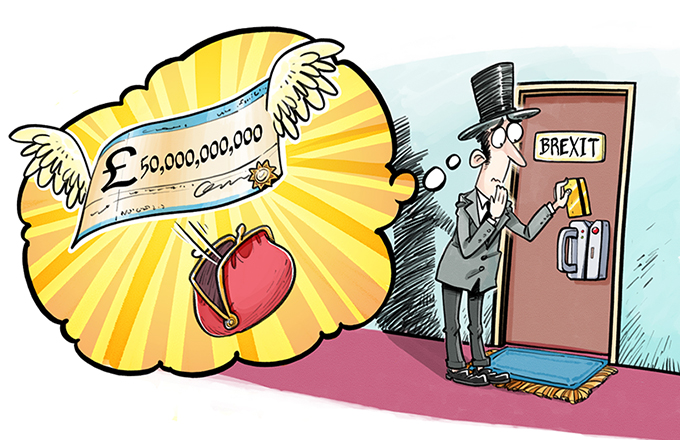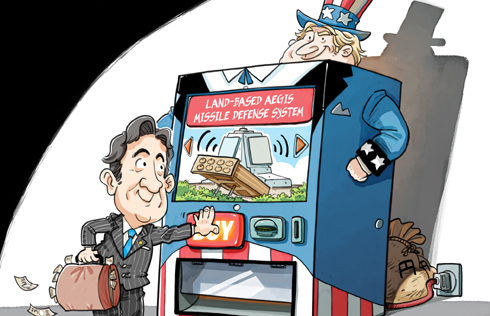Taking it one step at a time
Liberation of lending rates is a milestone for financial market but timely relaxing of controls on deposit rates also needed
China's central bank announced interest rate reforms on Friday that are a milestone in China's financial marketization. It removed the floor on lending rates, allowing banks to cut rates as much as they like to attract customers, scrapped the controls on bill discount rates and lifted the ceiling on lending for rural banks. However, it did not remove the ceiling on deposit rates.
There was little shock to the market as the move had long been anticipated and the news was announced after the closing of stock markets on Friday, so there were two days for the market to digest the changes.
The long-term benefits of lifting controls on lending rates cannot be underestimated as it is the start of China's market-oriented reform of its financial market. Before the latest reforms the interest rates for both loans and deposits had controls relating to the benchmark rate and were strictly regulated by government.
Meanwhile, the central bank's relaxation on bill discount rates means that banks can set their own prices instead of calculating the discount rate, rediscount interest rate and the extra interest rates together. This change is good for guiding the market to use the Shanghai Interbank Offered Rate in the interest rate pricing process, which is a market-oriented practice, rather than using the benchmark interest rate as before.
Moreover, such a change will help promote interest rate liberalization. The central bank, instead of relying on the open market, can widely use the short-term interbank offered rate to regulate market liquidity as developed countries do.
In short, after years of development, SHIBOR has become a major benchmark of the pricing in financial products and services, so canceling the bill discount rates is a significant step for China to realize interest rate liberalization.
Before the lifting of the controls on lending rates, the competition among domestic banks was actually competition in the scale of lending rather than price. Under such circumstances, there was no motivation for banks to improve their abilities in credit risk pricing.
The reforms mean banks will now give risk pricing to different borrowers based on their credit situation. However, this means banks will need to improve their risk pricing ability, which requires the establishment of an effective credit appraisal system as well. This will allow banks to compete on price.
Canceling the floor for lending rates is also intended to lower the financing costs for companies and optimize financial resources to boost the real economy. However, these benefits are based on theoretical analysis and the experiences of developed countries, where banks compete on price. Since the current Chinese financial market is still developing, many companies, local governments and individuals are "capital hungry", so the level of demand will keep rates high despite the scrapping of the floor.
Lending rates represent profit for banks, while deposit rates represent costs. So if the liberalization is only on the profit side, over-expansion of credit can hardly be avoided, because the more banks' credit expands the larger profits they can earn, and the interest margin can be even higher when the loanable funds are constrained. This means banks may increase the financing costs for the real economy and those funds raised with higher costs will drive up the prices of all kinds of assets, especially real estate prices.
Even though the central bank has liberated interest rates, if the market's old concepts and benefits pattern continue, over-expansion in credit and constraints in loanable funds will still coexist in the market. Removing the controls could provide even more space for "rent seeking" in the system. And with capital closely related to power and personal relations, it will still be extremely difficulty for small and medium enterprises to get financing.
Interest rate liberalization in China is being carried out gradually, and to some extent, that is why many problems in financial market exist.
The key is freeing deposit rates. A liberation of deposit rates would force banks to carry out effective risk pricing considering the floating costs and make them more cautious and rational in their commercial activities. Therefore, after removing the control on the interest rates for lending, China should seek to liberate the deposit rates in a timely manner.
The recent move is an important step, but not the final step for realizing interest rate liberalization. Only when the controls on commercial banks' deposit interest rates are lifted, will an effective price mechanism be established and the financial market be dominated by supply and demand.
The author is a researcher with the Institute of Finance and Banking under the Chinese Academy of Social Sciences.
(China Daily 07/24/2013 page8)



















